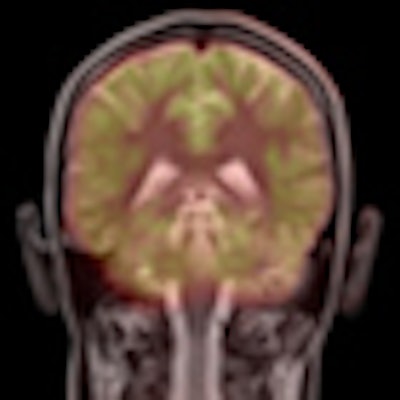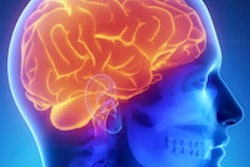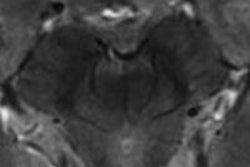
Researchers have provided further evidence that hybrid PET/MRI systems can offer "uncompromised MR image quality" and a "high accordance" between PET/MR and PET/CT in a new study published online 17 January in the European Journal of Radiology.
The study, led by Dr. Nina Schwenzer from the department of diagnostic and interventional radiology at Eberhard-Karls University Tübingen in Germany, concluded that the results are justification for PET/MRI in further clinical studies and "may contribute to the transfer into whole-body PET/MR systems."
The researchers enrolled 50 patients, ranging in age from 16 to 85 (mean age of 57) between August 2008 and August 2010 and divided them into three groups. There were 29 subjects with intracranial pathologies, such as meningioma, glioma, and metastasis, in the first group and 10 subjects in the second group with head and upper neck tumors. The third group included patients with neurodegenerative disorders, such as Parkinson's syndrome and Alzheimer's disease.
Imaging protocol
Before their PET/MRI examinations, all 50 patients received a PET/CT scan with either FDG, carbon-11 (C-11) methionine, or gallium-68 DOTA-tyr3-octreotide (Ga-68 DOTATOC). FDG-PET imaging (Hi-Rez Biograph 16, Siemens Healthcare) began 55 to 65 minutes after injection of FDG (350-399 MBq) and continued for four minutes per bed position. PET imaging with methionine started 30 minutes after injection (585-764 MBq) and lasted for eight minutes per bed position. PET imaging with Ga-68 DOTATOC commenced 20 minutes after injection (126-153 MBq), then proceeded for four minutes per bed position.
Patients with glioma or neurodegenerative disorders received a noncontrast-enhanced, low-dose CT scan of the brain for PET attenuation correction. Meningioma patients were given a CT scan with 90 mL of contrast (Ultravist, Bayer Schering Pharma), while patients with head and upper neck tumors were given a contrast-enhanced CT scan after 100-120 mL of contrast (Ultravist 370, Bayer Schering Pharma) for the body scan followed by a second contrast-enhanced scan for the head and upper neck. Again, the CT data were used for attenuation correction of the PET scan.
Researchers then used a prototype hybrid PET/MRI system, which is designed for simultaneous PET and MR imaging of the brain and upper neck area. The system features an MR-compatible PET scanner (BrainPET, Siemens), which is inserted into a modified whole-body 3-tesla MRI (Magnetom Trio, Siemens).
Simultaneous acquisition
Simultaneous PET and MR data acquisition commenced 30 to 60 minutes after PET/CT acquisition, with the PET/MRI scan lasting for 30 to 40 minutes depending on the MRI sequences. They were 20 patients among the three groups who received arterial spin labeling (ASL) MRI, 23 patients who were given proton MR spectroscopy, and 25 patients who underwent diffusion-tensor MRI.
Researchers were able to perform successful PET/MRI scans in 45 of 50 patients, with one patient opting out partway through the examination because of claustrophobia.
Two experienced radiologists evaluated the image quality of the MRI datasets, basing the results on a four-point scoring system, with 1 signifying no artifacts and 4 as having severe artifacts and no diagnostic value.
In their evaluation of 45 anatomical T2-weighted MR images, the radiologists rated all T2 images as showing diagnostic image quality. There were no artifacts in 35 patient results, eight scans had minor artifacts, and two cases were classified as having major artifacts. In addition, fluid-attenuated inversion-recovery (FLAIR) images were evaluated as having no artifacts in 31 patient images, minor artifacts were seen in 11 cases, and major artifacts were reported for three individuals.
Tumor delineation
Among the eight patients who received DOTATOC-PET scans, the evaluation determined that the images of meningiomas were comparable in the PET/MRI and PET/CT images for six patients, while an additional lesion was found in the PET/MRI results for the other two patients.
Among the patients who received PET-methionine scans, no methionine uptake was visible in the tumor tissue in PET images as seen on the MRI results and four patients. In the other three patients, researchers found comparable results for both the PET/MRI and PET/CT images.
Schwenzer and colleagues noted some limitations of their study, including the different scanning times for the PET/CT and PET/MRI examinations. They noted that an acquisition time of 30 minutes was chosen for the PET/MRI to take advantage of the simultaneous acquisition of MRI and PET, "since the routinely done MR protocols for brain imaging last normally for half an hour," they wrote. "This is in contrast to the PET acquisition in PET/CT with acquisition times between four and eight minutes per bed position. The optimal time frame for PET acquisition in the BrainPET/MR is a current research subject."
Further research
Simultaneous PET/MR imaging is "possible with generally good image quality and that advanced MR techniques, such as arterial spin labeling, proton spectroscopy, and diffusion-tensor imaging are possible without substantial limitations," the researchers concluded. They also rated tumor delineation with the PET quite adequate.
"These results justify the application of this hybrid imaging technique in future clinical studies," Schwenzer and colleagues wrote. "To achieve the full potential of this BrainPET/MR prototype system, the current issues concerning streak artifacts and quantification of radioactivity uptake need to be further addressed."
Note: The PET/MR image on the home page was obtained with the Biograph mMR PET/MR system. Image courtesy of Siemens.




















